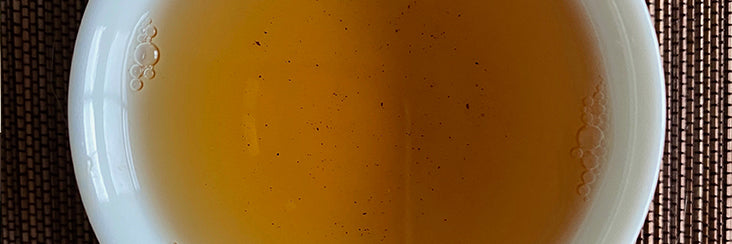
Honey Hong Shui Oolong Tasting Notes | Eco-Cha Tea Club

Read all about the origins of this month's Honey Hong Shui Oolong Tea in our post here.
The Chinese "hong shui" means "red water", and the term has been adopted (or revived, depending on who you ask) as a name for heavily oxidized Oolong Tea. The name is used to designate a type of Oolong to stand on its own, and not be devalued by popular judging standards and marketing trends in Taiwan. The popular High Mountain Oolong Tea is a lightly oxidized tea with a bright golden, yellowish-green color. And even the competition standards set for Dong Ding Oolong Tea are a lighter golden-orange. But Hong Shui is, in fact, a proper tea on its own, and the level of oxidation is simply a variation in processing, not a fault or shortcoming in terms of its value. The processing methods to make this type of tea are actually how tea was made in Lugu (and many other places most likely), Taiwan, before tea became a commercial commodity.

To most of us, the dried leaves in the photo above look pretty much like most rolled Oolong Teas made in Taiwan. But a more scrutinizing eye will notice a few fundamentals about their appearance that tell their story. First, they are not tightly rolled into neat, uniformly shaped nuggets. This could be intentional, in a more traditional style, or it could be the condition of the leaves that don't allow them to be rolled tightly. Secondly, the coloration of the leaves is not uniform. The color variation essentially indicates partial, yet significant oxidation. The leaves also appear to be unroasted, as roasting will darken the leaves, making them more uniform in color. Thirdly, the stems are fairly thick and substantial, indicating that the leaves are relatively mature.
All of these factors collectively point to leaves that were cultivated naturally, affected by pests, allowed to mature, and then arduously processed — based on their condition when they were plucked. And all of these factors are typical in the appearance of Hong Shui Oolong's dried leaves. And leaves that look like this are much more likely to have a "bug-bitten" character — which is most obviously noticed by the honey notes in its flavor profile.

Visual assessment of the brewed leaves is much easier to perceive all of the above mentioned points. These are leaves leaves that grew tough in response to being bug-bitten, which made them stubborn in their processing. This warranted extensive withering and shuffling to induce oxidation, but the oxidation is still mostly on the edges of the leaves given their tough consistency.

So that's the background of these leaves that, in the end come down to the aromatic and flavor profile they offer when brewed. This is indeed a singular batch of tea that cannot be replicated. The growing conditions, most obviously including the magic of the Green Leafhopper, and the processing methods chosen by skilled Oolong artisans make it a one-of-a-kind.
These leaves possess a complexity that warrants exploration in brewing methods. We recommend starting with a 1:20 to 1:25 ratio of leaf to water. For example, we used about 8.5g of leaves in a 200mL teapot, and brewed with boiling temp. water for about one minute intervals. We also encourage you to save some of the brew to let it cool down to room temperature, and even let it sit for at least an hour. Its constitution changes, and many different flavor notes can be enjoyed. The flavor profile of this tea also lends itself well to making iced tea, and will make a fine cold brew as well!
Finally, please share your experiences of this tea with us in the comments below.
Enjoy!
LET US KNOW!
If you liked this article, please leave a comment in the comments section below or leave any questions you may have as well.
SUBSCRIBE!
If you enjoyed this post and would like to hear more about the specialty tea industry here in Taiwan, follow us on YouTube, Facebook, and Instagram and please subscribe to our newsletter. Subscribe now and get $5 off your first order!

